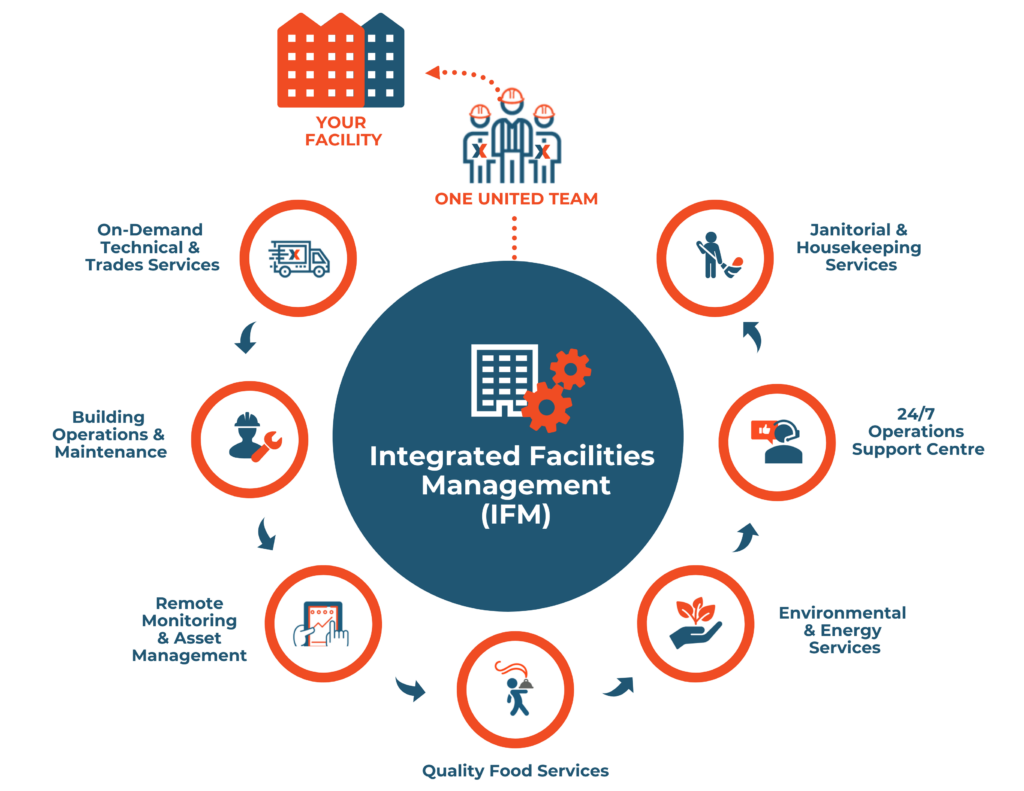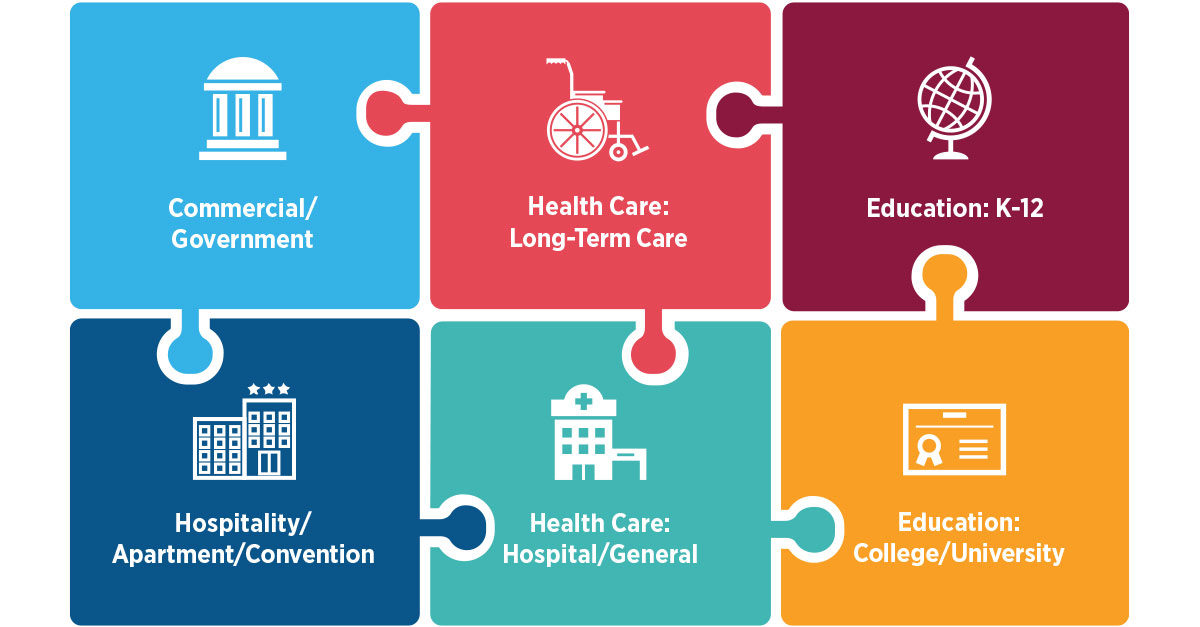Secret Trends Shaping the Future of Facility Administration in 2024
As we look ahead to 2024, the landscape of facility management is positioned for substantial transformation, driven by a number of crucial fads. The integration of wise building innovations and a change in the direction of data-driven decision-making promise to improve functional performance while focusing on sustainability in practice. The appearance of crossbreed job versions is reshaping workplace atmospheres, requiring ingenious style options that cater to developing employee needs. Amid these changes, the concentrate on owner health proceeds to get traction, highlighting the value of a healthy work environment. How these trends will certainly show up in method stays a critical question for sector experts.
Smart Structure Technologies

Smart building technologies encompass a broad variety of systems, including intelligent illumination, a/c controls, and protection systems. By incorporating these systems, facility managers can keep track of and change specifications in real-time, causing considerable decreases in power waste and functional prices. Smart sensors can detect occupancy levels and readjust lights and temperature level appropriately, making sure that power is just utilized when required.
Moreover, these technologies promote boosted information collection, enabling organizations to track use patterns and determine chances for further improvements. The implementation of clever structure innovations not just adds to sustainability goals yet likewise creates much healthier workplace that can increase employee performance and fulfillment.
As we move right into 2024, the fostering of smart structure innovations will likely accelerate, mirroring a broader change towards even more intelligent, receptive, and sustainable center monitoring methods.
Data-Driven Decision Making
Significantly, organizations are leveraging data-driven decision making to improve facility monitoring practices. By using data analytics, center managers can acquire actionable understandings that considerably boost operational efficiency and source allocation. The combination of advanced innovations, such as IoT sensors and real-time surveillance systems, enables the collection of vast quantities of data on building efficiency, tenancy rates, and power intake.
This wide range of information allows facility supervisors to determine fads, forecast maintenance needs, and proactively address problems prior to they intensify. For instance, anticipating analytics can forecast tools failings, reducing downtime and repair service prices. Additionally, data visualization tools help with far better interaction amongst stakeholders, guaranteeing that notified decisions are made collaboratively.
Moreover, data-driven methods improve calculated preparation by making it possible for center supervisors to assess the efficiency of present methods and make notified selections relating to financial investments in innovation or infrastructure. As organizations significantly focus on functional quality, data-driven choice making is poised to end up being a foundation of successful facility management strategies in 2024 and beyond. Ultimately, the capability to leverage data effectively will encourage companies to create more efficient, informative post effective, and durable facilities.
Sustainability and Green Practices
The focus on data-driven choice making normally lines up with the growing focus on sustainability and environment-friendly methods within center administration. As organizations increasingly focus on environmental responsibility, facility supervisors are leveraging analytics to maximize resource use, lower waste, and lessen carbon footprints. This critical strategy allows the integration of energy-efficient systems, such as LED lights, wise HVAC controls, and renewable power sources right into facility procedures.
Additionally, the implementation of lasting methods extends past energy usage. Facility supervisors are advertising and taking on eco-friendly materials reusing initiatives to develop a circular economy within their centers. This not only improves the ecological profile of the organization but likewise cultivates a culture of sustainability amongst employees.
Conformity with ecological guidelines is another important aspect driving the fostering of eco-friendly methods. By using information analytics, facility managers can keep an eye on compliance metrics and identify areas for enhancement, ensuring adherence to worldwide and neighborhood sustainability standards.
Hybrid Job Versions
A significant change in the direction of crossbreed job models is improving the landscape of facility management in 2024. This standard integrates remote and in-office job, requiring a reevaluation of space application, source allocation, and employee interaction methods. Organizations are significantly identifying the relevance of flexible work areas that satisfy diverse requirements and preferences.
Center managers need to adjust by carrying out functional office styles that support collective initiatives while offering locations for focused job. This consists of the assimilation of technology to promote smooth interaction and cooperation among remote and in-office employees. Smart building remedies, equipped with sensing units and analytics, permit real-time tracking of room usage, making it possible for organizations to enhance their settings successfully.
Furthermore, hybrid job designs stress the need for efficient center monitoring that prioritizes worker experience. This includes not just modern technology and space design yet also the development of policies that promote a balanced work-life dynamic. As business navigate this transition, the function of facility administration comes to be pivotal in developing a dexterous office that fosters productivity and drives organizational success. Fundamentally, the crossbreed job version is revolutionizing facility management, encouraging a proactive approach to fulfill the developing demands of the workforce.
Improved Resident Health
As companies embrace hybrid job models, an enhanced concentrate on passenger wellness is becoming important to facility management strategies. Facility Management. This change acknowledges that a satisfied and healthy labor force straight impacts performance and retention prices. Center managers are currently focusing on environments that advertise physical and psychological wellness, integrating aspects such as natural lights, biophilic design, and accessible wellness resources

Modern technology plays an essential role in this evolution. Smart building systems can monitor ecological variables and readjust setups in real-time, making sure ideal comfort levels - Facility Management. Furthermore, feedback devices, such as tenancy sensing units and employee surveys, permit center managers to constantly refine wellness campaigns based on resident needs.

Verdict
In 2024, the future of facility monitoring will be dramatically affected by the assimilation of wise structure innovations and data-driven decision-making, promoting enhanced functional effectiveness. These patterns collectively underscore the evolving landscape of center monitoring in feedback to modern obstacles and possibilities.
Facility managers are promoting and adopting eco-friendly products recycling initiatives to develop a round economic situation within their facilities.A significant change in the direction of hybrid job versions is improving the landscape of facility monitoring in 2024.In addition, hybrid work designs emphasize the need for reliable center management that focuses on worker these details experience.As organizations welcome hybrid work models, an enhanced emphasis on occupant health is becoming indispensable to facility management strategies.In 2024, the future of center management will certainly be considerably affected by the combination of clever structure innovations and data-driven decision-making, cultivating enhanced functional effectiveness.
Comments on “Why Facility Management is Crucial for Asset Long Life”